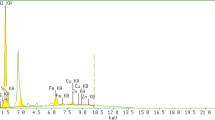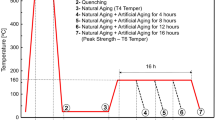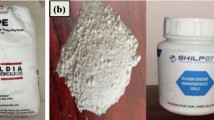Abstract
The role of surface preparation, hydrothermal ageing exposure and subsequent cyclic fatigue testing on the biaxial strength of a dental Y-TZP material are investigated. The initial strength and survival rate of a dental Y-TZP ceramic material to fatigue testing was found to be highly dependent upon surface preparation more so than exposure to various hydrothermal exposure conditions. The results suggest that the monoclinic phase generated by either surface damage (especially sandblasting) and to a lesser extent hydrothermal exposure does appear to mitigate strength and fatigue degradation. The results are discussed in terms of the size of defects generated following various surface treatments and the role of cyclic fatigue induced crack growth. A critical ratio is established between the monotonic strength and fatigue stress survival. From the specimens that failed and exhibited reduced strength after cycling a plot of averaged crack growth rate versus max cyclic stress intensity factor was established which closely matched existing results for Y-TZP ceramics.






Similar content being viewed by others
References
Rekow D, Thompson VP. Engineering long term clinical success of advanced ceramic prostheses. J Mater Sci Mater Med. 2007;18:47–56.
Sailer I, Pjetursson BE, Zwahlen M, Hämmerle CHF. A systematic review of the survival and complication rates of all-ceramic reconstructions after an observation period of at least 3 years. Part II: fixed dental prostheses. Clin Oral Impl Res. 2007;18:86–96.
Pjetursson BE, Sailer I, Zwahlen M, Hämmerle CHF. A systematic review of the survival and complication rates of all-ceramic reconstructions after an observation period of at least 3 years. Part I: single crowns. Clin Oral Impl Res. 2007;18:73–85.
Raigrodski AJ, Hillstead MB, Meng GK, Chung KH. Survival and complications of zirconia-based fixed dental prostheses: a systematic review. J Prosthet Dent. 2012;107:170–7.
Denry I, Kelly JR. State of the art of zirconia for dental applications. Dent Mater. 2008;24:299–307.
Kern M. Bond strength of luting cements to zirconium oxide ceramics. Int J Prosthodont. 2000;13:30–5.
Re D, Augusti D, Sailer I, Spreafico D, Cerutti A. The effect of surface treatment on the adhesion of resin cements to Y-TZP. Eur J Esthet Dent. 2008;3:186–96.
Kosmač T, Oblak Č, Jevnikar P, Funduk N, Marion L. The effect of grinding and sandblasting on flexural strength and reliability of Y-TZP zirconia ceramic. Dent Mater. 1999;15:426–33.
Kosmač T, Oblak Č, Jevnikar P, Funduk N, Marion L. Strength and reliability of surface treated Y-TZP dental ceramics. J Biomed Mater Res. 2000;53:304–13.
Xu H, Jahanmir S, Ives LK. Effect of grinding on strength of tetragonal zirconia and zirconia-toughened alumina. Mach Sci Technol. 1997;1:49–66.
Sato H, Yamada K, Pezzotti G, Nawa M, Ban S. Mechanical properties of dental zirconia ceramics changed with sandblasting and heat treatment. Dent Mater J. 2008;27:408–14.
Scherrer SS, Cattani-Lorente M, Vittecoq E, Mestral F, Griggs JA, Wiskott HW. Fatigue behavior in water of Y-TZP zirconia ceramics after abrasion with 30 μm silica-coated alumina particles. Dent Mater. 2011;27:28–42.
Kobayashi K, Kuwajima H, Masaki T. Phase change and mechanical properties of ZrO2-Y2O3 solid state electrolyte after ageing. Solid State Ion. 1981;3:489–95.
Chevalier J, Gremillard L, Deville S. Low temperature degradation and implications for biomedical implants. Annu Rev Mater Res. 2007;37:1–32.
Swain MV. Impact of oral fluids on dental ceramics: what is the clinical relevance? Dent Mater. 2014;30:33–42.
Raigrodski AJ, Yu A, Chiche GJ, Hochstedler JL, Mancl LA, Mohamed SE. Clinical efficacy of veneered zirconium dioxide-based posterior partial fixed dental prostheses: five-year results. J Prosthet Dent. 2012;108:214–22.
Peláez J, Cogolludo PG, Serrano B, Lozano JF, Suárez MJ. A prospective evaluation of zirconia posterior fixed dental prostheses: three-year clinical results. J Prosthet Dent. 2012;107:373–9.
Scott HG. Phase relationships in the zirconia-yttria system. J Mat Sci. 1975;10:1527–35.
Arvidson K, Johansson EG. Galvanic current between dental alloys in vitro. Scand J Dent Res. 1985;93:467–73.
Keuper M, Berthold C, Nickel KG. Long-time aging in 3 mol.% yttria-stabilized tetragonal zirconia polycrystals at human body temperature. Acta Biomater. 2014;10:951–9.
Garvie RC, Nicholson PS. Phase analysis in zirconia systems. J Am Ceram Soc. 1972;55:303–5.
Wachtman JB, Capps W, Mandel J. Biaxial flexure tests of ceramic substrates. J Mater. 1972;7:188–94.
Chevalier J, Olagnon C, Fantozzi G. Subcritical crack propagation in 3Y-TZP ceramics: static and cyclic fatigue. J Am Ceram Soc. 1999;82:3129–38.
Kitano Y, Mori Y, Ishitani A, and Masaki T, A study of rhombohedral phase in Y2O3-partially stabilized zirconia. In: Materials Research Society symposia proceedings, vol. 78. 1987. p. 17–24
Denry IL, Holloway JA. Microstructural and crystallographic surface changes after grinding zirconia-based dental ceramics. J Biomed Mater Res B. 2006;76:440–8.
Virkar AV, Matsumoto RLK. Ferroelastic domain switching as a toughening mechanism in tetragonal zirconia. J Am Ceram Soc. 1986;69:C224–6.
Munoz-Tabares JA, Jimenez-Pique E, Reyes-Gasga J, Anglada M. Microstructural changes in ground 3Y-TZP and their effect on mechanical properties. Acta Mater. 2011;59:6670–83.
Whalen PJ, Reidinger F, Antrim RF. Prevention of low-temperature surface transformation by surface recrystallization in yttria-doped tetragonal zirconia. J Am Ceram Soc. 1989;72:319–21.
Morena M, Beaudreau GM, Lockwood PE, Evans AL. Fatigue of dental ceramics in a simulated oral environment. J Dent Res. 1986;65:993–7.
Studart AR, Filser F, Kochler P, Gauckler LJ. Fatigue of zirconia under cyclic loading in water and its implications for the design of dental bridges. Dent Mater. 2007;23:106–14.
Author information
Authors and Affiliations
Corresponding author
Rights and permissions
About this article
Cite this article
Oblak, C., Verdenik, I., Swain, M.V. et al. Survival-rate analysis of surface treated dental zirconia (Y-TZP) ceramics. J Mater Sci: Mater Med 25, 2255–2264 (2014). https://doi.org/10.1007/s10856-014-5217-1
Received:
Accepted:
Published:
Issue Date:
DOI: https://doi.org/10.1007/s10856-014-5217-1




